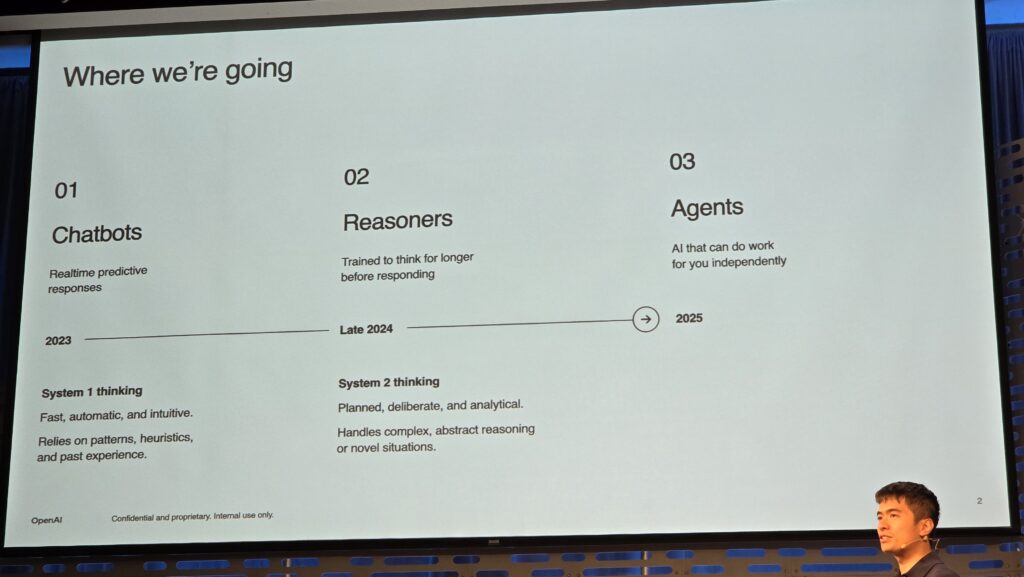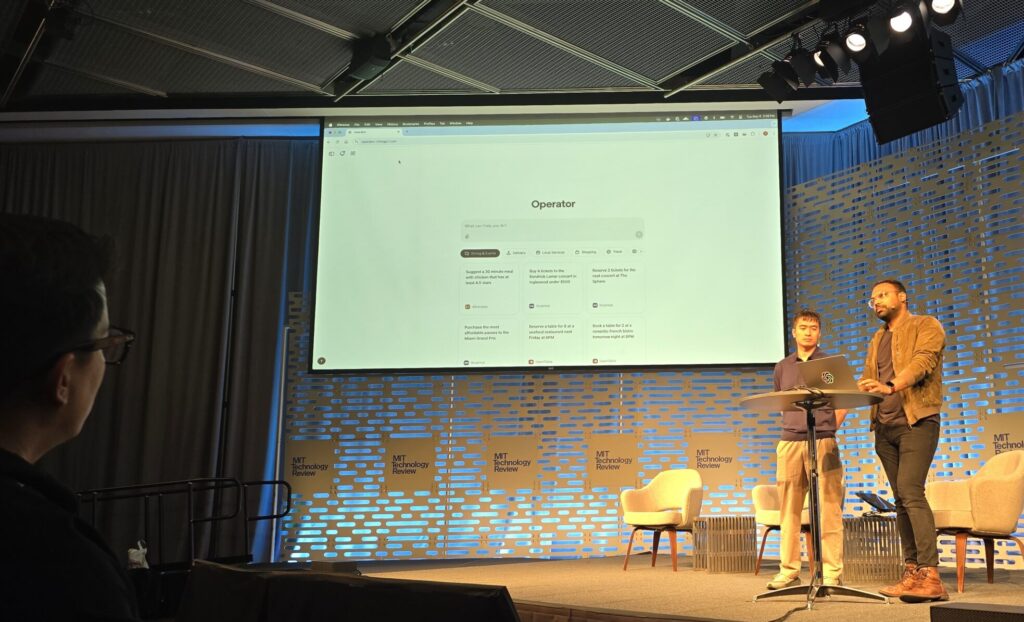Cambridge, MA – MIT EmTechAI: Yash Kumar and Reiichiro Nakano from OpenAI discussed the evolution and impact of AI agents-particularly OpenAI’s Operator-on digital interaction. Their conversation highlighted the technological progress, challenges, and future directions of AI agents as they move from simple chatbots to sophisticated digital assistants capable of performing complex, real-world tasks on behalf of users.
Major Themes and Takeaways
1. Evolution from Chatbots to Agents
- The speakers described how, not long ago, AI was limited to chatbots that could answer questions in a human-like way. Now, AI agents like Operator can interact with web browsers, perform tasks such as booking travel, shopping, or navigating websites, and even plan and execute multi-step actions.
- This shift represents a move from “just talking about it” to actually doing things for users in the digital world, making AI more actionable and useful in daily life.
2. Demonstrating Operator: Real-World Task Automation
- Operator, OpenAI’s new agent, can perform a wide range of tasks online, such as shopping, booking, and handling repetitive chores. It can navigate websites visually, scroll, click, and enter data much like a human would, but at digital speed.
- The demo illustrated how Operator can manage multiple tasks, validate user requests, and allow users to intervene or take over at any time, ensuring a blend of automation and user control.

3. Safety, Alignment, and User Control
- Safety is a central concern. The speakers outlined three main sources of risk:
- User intent misalignment: When the user’s instructions are unclear or potentially harmful.
- Model misalignment: When the AI interprets instructions incorrectly or acts unexpectedly.
- Environmental misalignment: When external factors (like phishing emails) could trick the agent into unsafe actions.
- Operator requires user confirmation before executing potentially risky actions (like transferring money), and there are multiple layers of monitoring and intervention to prevent misuse.
- Users retain the ability to take control at any point, ensuring that the agent never acts completely autonomously without oversight.
4. Accessibility and Global Reach
- The speakers emphasized the importance of making these technologies accessible worldwide, including in India, and ensuring that products are simple enough for anyone to use, regardless of technical background.
- They highlighted personal stories, such as helping family members with online tasks, to illustrate the real-world impact of AI agents on everyday life.

5. Open Problems and Future Directions
- Despite rapid progress, the speakers acknowledged that there are still open challenges, especially around ensuring robust safety, perfect alignment, and handling the vast diversity of real-world situations.
- They foresee a future where AI agents become increasingly integrated into daily routines, taking over repetitive or complex digital tasks and freeing up users’ time for more meaningful activities.
- The conversation suggested that as confidence in these agents grows, their autonomy will gradually increase, but always with strong safeguards and user empowerment at the core.
Summary Table: Key Features and Challenges of AI Agents
| Aspect | Current State | Challenges & Future Focus |
| Task Automation | Can perform web tasks, shopping, booking, etc. | Handling more complex, multi-step tasks |
| User Control | User can intervene/take over at any time | Balancing automation with oversight |
| Safety & Alignment | Multi-layered confirmation and monitoring | Preventing misalignment and misuse |
| Accessibility | Expanding to global markets, simplifying UX | Ensuring inclusivity and ease of use |
| Continuous Learning | Ongoing model updates and monitoring | Adapting to new threats and scenarios |
Conclusion
AI agents like OpenAI’s Operator are transforming digital interaction by moving beyond conversation to direct action in the digital world. The journey from chatbots to capable agents is marked by advances in automation, safety, and accessibility. While significant challenges remain-particularly around safety and alignment-the trajectory is clear: AI agents are poised to become indispensable digital partners, handling routine and complex tasks, and reshaping how we interact with technology.
For more information, please visit the following:
Website: https://www.josephraczynski.com/
Blog: https://JTConsultingMedia.com/
Podcast: https://techsnippetstoday.buzzsprout.com
LinkedIn: https://www.linkedin.com/in/joerazz/


Leave a Reply
You must be logged in to post a comment.